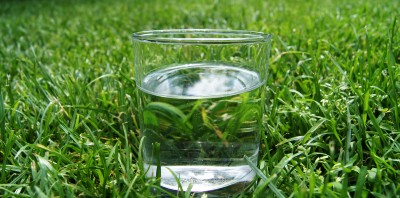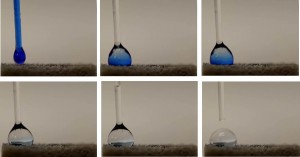Treating water with the help of nanoparticles is a huge topic in nanotechnology. Many nano-effects can contribute to a better water quality, by killing bacteria, removing toxic metals, decomposing organic contaminants, or even removing oil.
Such nanoparticle-initiated processes can be used in the field of groundwater remediation as well as in water treatment plants for drinking water, and shall – in the future – even be applied to single drinking portions.

The Guardian wrote an illustrative report about nanotech advances to the cleaning of drinking water for the developing world, especially listing nanoparticles from magnetite, silver and titania:
SciDev.Net has summarized “nano-based products” like nanofiltration membranes, nanosponges, or nanorust that are “relevant to developing countries” for specific kinds of water treatments:
In the field of groundwater remediation, the use of zero-valent iron nanoparticles has already become quite popular. During the process, the particles are usually dissolved.
For example, Nanoiron s.r.o. applied their material at a groundwater remediation site in the Czech Republic. It eliminated chlorinated hydrocarbons and hexavalent chromium showing convincing quantitative results:
Lehigh Nanotech from Pennsylvania are listing former projects in which their iron nanoparticles were applied for environmental remediation all over the US:
Field trials have also been conducted in Ontario, Canada. A recent press release from Sydney explains how iron nanoparticles helped to clean Canadian groundwater that was contaminated with toxic chemicals. It could also become relevant to hundreds of Australian sites:
For TCE, a carcinogen from degreasers that contaminates goundwaters all over the world, a recent publication by Rice University has demonstrated that nanoparticles based on palladium clean TCE “a billion times faster” than iron-based reductants:
Even pollution with oil could be removed with the help of nanoparticles, as demonstrated recently by researchers from Genova. They used a polyurethane foam that can swim on water surfaces. Such foams were equipped with microspheres from PTFE (binding oil and repelling water) and nanoparticles from iron oxide (for a subsequent magnetic collection) to potentially bind and remove oil from contaminated water surfaces:

So while some people are worrying about nanoparticles as water contaminants, others are employing them to get rid of contaminants. Sounding contradictory, this again demonstrates that every type of nanoparticles has different effects – and that “nanoparticles” are never generally magic, malicious, world-saving – or contaminating.
